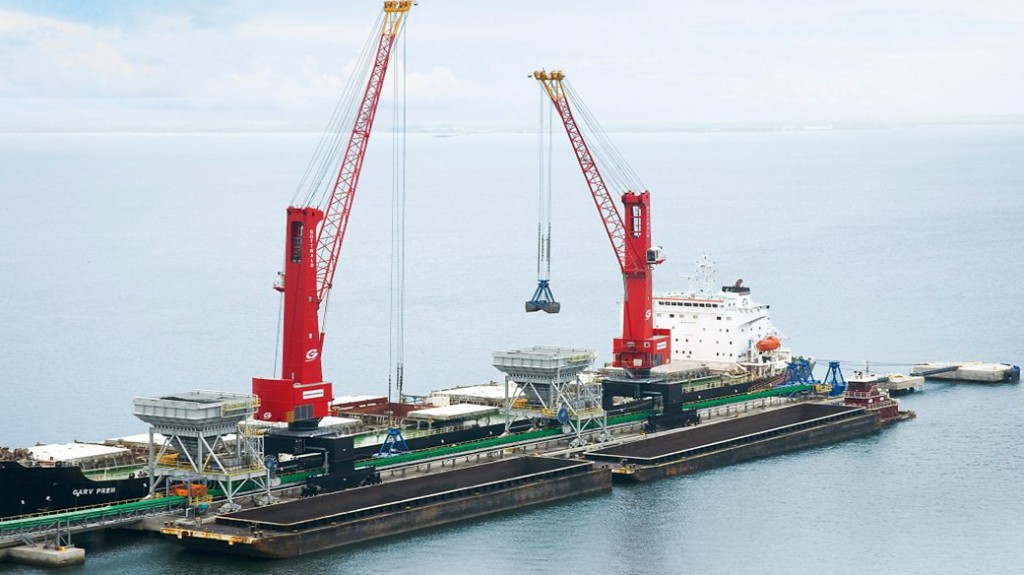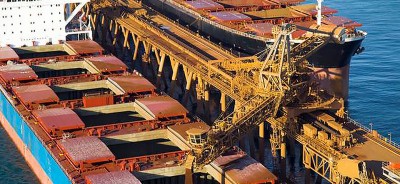Dry bulk market may suffer now, but is bound for a recovery thanks to a limited future fleet growth
The slow increase of dry bulk tonnage growth this year could turn into a solid indicator of the market’s future prospects. According to a recent report from Allied Shipbroking, “since the start of the year the total dry bulk fleet has risen by 115 vessels, or 1.2% of the active fleet. Of course, at the same, despite the more optimistic scenarios unfolding on the frieght market, “dry bulk commodities are still showing off their bearish face on the back of weaker manufacturing data from the world’s number one workshop. Commodity prices were faced with a strong decline today, with some hitting multi-year lows, as worries started to grow over the extent of the over supplies issues faced globally as production showed ever weaker figures this month”, said Allied.
Allied’s, head of Market Research & Asset Valuations, George Lazaridis noted that “even in the case of commodities such as iron ore, which during the past couple of weeks has shown good signs of strengthening, after spot pric-es gained more than 25% over the past month, is still finding it difficult to support a bullish market feel, as steel output continues to tumble while the futures contract mar-ket points to a still lagging market in terms of demand. The main issue will hold, as these commodities primarily used in power and construction, are facing a lack in demand which will take time and a lot of support to bring it back on an upward moving track”. He added that “so, on the basis of common logic, this slump in commodity prices should follow a slump in freight markets which are a directly influenced indicator of the volumes that are traded worldwide. Yet the freight market has been showing a trend of its own, even if one takes into account the recent softening that has been noted in most of the size seg-ments, it seems as though the shipping industry has taken all the right precautions in order to be better placed to handle a market where slower growth levels are the new reality”.
Meanwhile, Lazaridis noted that “looking at the fleet in more detail, size segments such as that of Capes and Handies have decreased in number during this period by 14 vessel (-0.9%) and 5 vessels (-0.2%) respectively. In terms of the Capes, it could explain why we have managed to see a notable recovery in freight rates during the past months and a half. Yet even in Panamax size segment growth has been fairly limited, with the fleet in-creasing by only 11 vessels (0.6%). The only size segment that has not followed this trend has been the Supramax segment which has not only grown by 112 vessels (4%), but the majority of the new vessels being delivered are Ultramax vessels which are of considerably higher carrying capacity than the average of the fleet in this deadweight range (40-67,000dwt). With all these figures being for the 7 months that have passed and not annualised figures, we can’t directly compare them to the year-on-year growth in trade. Nevertheless, these figures do clearly show that the growth in fleet is clearly moving slower than that of trade and if this pace continues it isn’t hard to imagine an improving freight market moving forward”, he said.
Therefore, noting all the above, “it looks as though we might have found the “sweet spot” in terms of balance between fleet and trade growth. The market has now switch to one which is highly dependent on the course that the supply side will take, as it seems that on the demand side things are on a fairly predetermined course and bearish in outlook for the short-run. This means that we will have to continue capping supply in order to regain a market that is performing well enough to entice new investors as well as to bring earnings back into the black for current owners/operators. Something that may seem fairly easy now that new orders have all but stopped, yet the main difficulties will be those faced further down the line, once optimism re-enters the market and speculators start dealing the difficult “blows”, Lazaridis concluced.
[Retrieved from : Nikos Roussanoglou, Hellenic Shipping News Worldwide]


